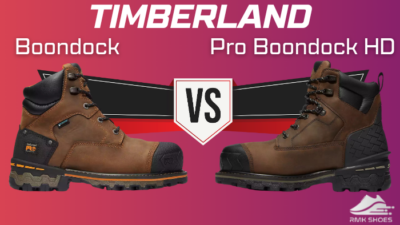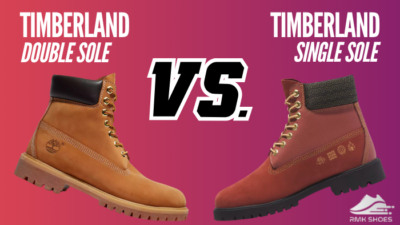Timberland and Wolverine both boast rich histories, loyal followings, and boots designed to tackle anything from harsh work environments to challenging outdoor adventures.
But which brand is better for you?
This article is your definitive guide to the Wolverine vs. Timberland showdown.
I’ll dissect each brand, exploring their signature styles, strengths, and target audiences. Also, I’ll compare their offerings in critical areas like durability, comfort, protection, and price to help you know which is ideal.
Let’s begin!
An Overview of the Timberland and Wolverine Brands
Timberland: Where Heritage Meets Innovation
Timberland, founded in 1952 in Massachusetts, began with humble beginnings, crafting waterproof boots for loggers and construction workers.
Today, they’ve evolved into a global brand, but their commitment to durability and performance remains their core value. Their iconic yellow boot, the Timberland 6-Inch Premium, is a testament to this, boasting legendary waterproof construction and timeless style.
Beyond heritage, Timberland embraces innovation.
Their PRO line caters to professionals, offering features like electrical hazard protection and composite safety toes.
They prioritize comfort, too, incorporating technologies like Anti-Fatigue technology to combat workday exhaustion.
Timberland caters to a diverse audience, from construction workers to electricians to everyday adventurers, offering classic and modern styles.
Wolverine: Built for Courage, Crafted for Comfort
Wolverine, established in 1883 in Michigan, boasts a rich history of crafting boots for demanding industries like logging and mining.
Their focus on quality and resilience is evident in their use of premium materials like Horween leather and Goodyear welt construction, renowned for their longevity and repeatability.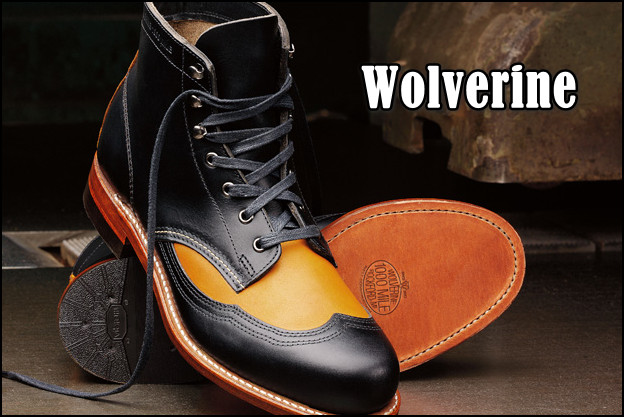
However, Wolverine doesn’t stop at durability.
Their focus on comfort has earned them a loyal following. Features like Wolverine DuraShocks® cushioning and Wolverine MultiShocks® footbeds provide all-day support, while technologies like waterproofing and insulation make them adaptable to various environments.
Unlike Timberland’s broader audience, Wolverine primarily targets industrial and trade professionals, offering a narrower range of styles but deeper expertise in those specific needs.
Characteristic Comparison between Wolverine and Timberland Boots
Both brands provide excellent boots and shoes. Familiarizing yourself with their features enables you to make well-informed decisions that align with your style, comfort preferences, and usage.
| Feature | Wolverine | Timberland |
|---|---|---|
| Origin | Michigan, United States | Massachusetts, United States |
| Began in | 1883 | 1952 |
| Founders | G.A. Krause | Nathan Swartz |
| Famous For | Quality work boots and innovation | Iconic yellow boots and outdoor apparel |
| Construction | Rugged but elegant | Bold and recognizable |
| Product Lines | Work boots, Casual boots, Shoes, Clothing & Accessories | Work boots, Casual boots, Shoes, Clothing & Accessories |
| Shoe Types | Work boots, Safety Toe boots, 1000 Mile boots, Waterproof footwear, Hiking boots/shoes | Work boots, Safety Toe boots, 6 Inch boots, Waterproof footwear, Hiking boots/shoes, Chukkas, Winter boots, Sneakers |
| Target Audience | Merchants, Construction workers, Outdoor enthusiasts | Fashion-conscious individuals, Outdoor enthusiasts |
| Style | More traditional, work-oriented aesthetics | More trendy, fashion-forward designs |
| Durability | Excellent | Good |
| Comfort | OrthoLite or Double-density foam footbeds | Anti-fatigue technology and Comfort-focused |
| Materials | Leather, synthetic materials, Vibram® soles | Leather, nubuck, suede, synthetic materials, Vibram® soles |
| Cushioning | Poron® XRD foam | Eva foam |
| Sizing | Generally True-to-Size | Generally True-to-Size |
| Fit | Snug fit | Spacious fit |
| Safety Measures | Safety Toe Caps, Waterproof uppers, and more | Safety toe caps, Metatarsal guards, Puncture-Resistant plates, Electrical Hazard protection |
| Weight | Lightweight | Usually heavier due to protective features |
| Warranty | 30-Day free return or exchange | 12 months |
| Boot Price Range | From $80 to $400 | From $100 to $295 |
| Best Sellers | Hellcat Ultraspring™ 6" Carbonmax®, Legend Durashocks® Carbonmax® 6", Floorhand Steel-Toe Work Romeo | Premium 6-inch Waterproof Boot, Mt. Maddsen Waterproof Mid Hiking Boot, Direct Attach 6" Steel Toe |
| Best Uses | Work, Hiking, Outdoor activities | Casual wear, Light work, Outdoor activities |
For an in-depth examination of both brands, proceed to the following section.
Primary Differences between Wolverine and Timberland Boots
Knowing how Timberland differs from Wolverine is important to perform well and feel comfortable in your shoes. Technology, materials, durability, performance, and prices are key to consider, which all affect your experience.
Below, I’ve highlighted the major differences between Wolverine and Timberland.
1. Material Used & Quality
Wolverine and Timberland both boast heritage and durability.
Wolverine boots are tough as nails made from premium full-grain leather, which develops a beautiful patina as you break them in.
Nothing beats that feeling of a boot molding to your every step.
Also, many Wolverines boast Goodyear welt construction, the gold standard for durability. These boots are stitched, not glued, so you can resole them when worn, giving them new life.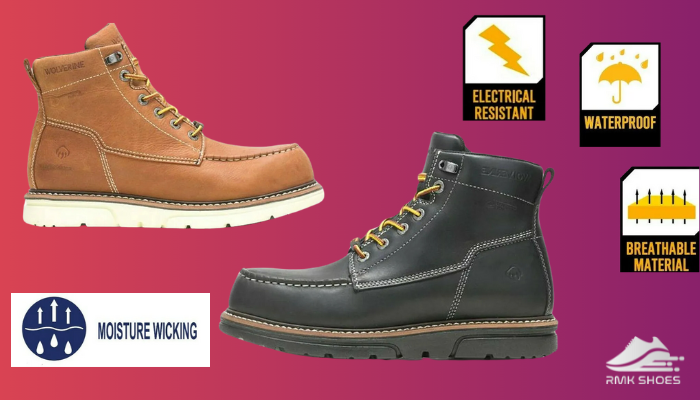
Some Wolverine models, like the legendary 1000 Mile Boot, use Horween Chromexcel leather, which repels water naturally. Others pack a punch with seam-sealed construction and durable water-repellent (DWR) coatings.
I’ve slogged through mud and snow in Wolverines, and my toes stayed toasty dry.
Let’s switch gears to Timberland.
Timberland’s a household name for a reason. Their iconic 6-inch boot is practically a cultural landmark.
But Timberland offers a broader variety of materials, from classic full-grain leather to nubuck and even synthetics.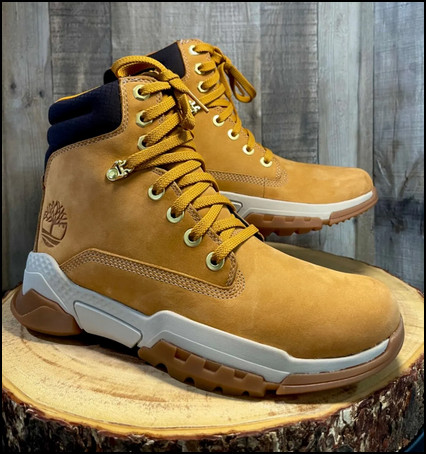
While the leather quality can vary depending on the model, their Heritage lines are impressive, rivaling Wolverine’s durability.
Construction-wise, Timberland relies on a mix of methods, including cemented and Goodyear welt. The cemented options are generally lighter and more affordable but won’t last as long.
For durable footwear, stick to the welted ones like the Abington Work Boot.
In terms of Timberland waterproof boots, they’ve got you covered with waterproof membranes like Gore-Tex and their own TimberDry™ technology. They keep your feet dry without sacrificing breathability.
Ultimately, choosing a winner is tough. Both brands offer top-notch quality and durability but with different strengths.
Wolverine shines with its premium leather, Goodyear welt construction, and classic styling, while Timberland counters with wider material options, innovative waterproofing tech, and a touch of modern flair.
2. Durability Details
Wolverine vs. Timberland: A durability showdown for the most challenging terrain, the mud, the mountains, and construction sites.
The Full-grain leather construction gives the Wolverine boots a rugged, no-nonsense vibe.
I could tackle anything when I slip on a pair of Wolverines. They’re built to last through anything I throw at them.
If you are wondering how long Wolverine boots last, don’t worry.
The durability is top-notch, making them my go-to choice for those long days in challenging environments. Whether trudging through mud or scrambling over rocks, my Wolverines stand up to the test without sweat.
The Wolverine Floorhand boots are all about quality materials for getting the job done right.
The premium look with leather and sturdy hardware boosts my confidence when I’m on the clock. But I’ve noticed that the leather upper, while sleek and stylish, might not hold up as well in super harsh conditions.
So, they’re great for the workplace but not ideal for those extreme outdoor adventures.
On the other hand, Timberland PRO boots bring their A-game regarding durability. They’re like the Hulk of work boots.
The genuine leather construction is top-notch, just like Wolverine, but with that Timberland twist.
I’ve put these boots through the wringer, and they’ve never let me down. Whether braving the elements or facing a tough workday, Timberland PRO boots have my back.
And then there’s the Timberland PRO Pit Boss Steel Toe. These shoes are like tanks.
The thick leather upper keeps my feet dry and protected, even in the gnarliest conditions. Plus, the solid metallic hardware and visible stitching add a touch of industrial style that I love.
I know I’m ready to tackle anything when I lace up my Pit Boss boots.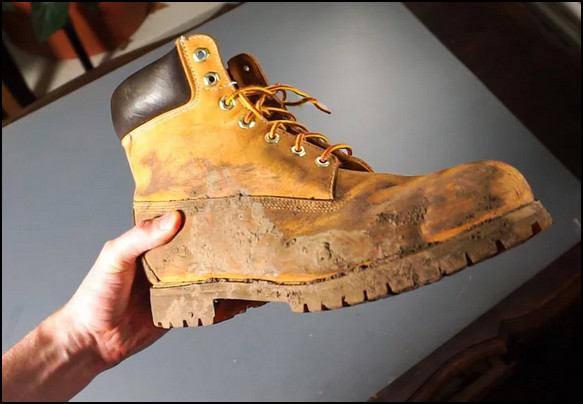
As you can see, both brands offer robust and reliable construction boots with full-grain leather and waterproof options. They have excellent durability and a proven track record.
Honestly, you can’t go wrong with either Wolverine or Timberland boots.
But if I had to pick a winner in the battle of durability, I’d have to give the edge to Wolverine.
3. Comfort Preferences
Forget about aching feet because both Timberland and Wolverine boots are ready to cradle your steps in plush comfort, each with its unique approach.
Wolverine kicks things off strong with OrthoLite or double-density foam footbeds.
Trust me; it’s like walking on clouds. These footbeds cradle your feet, saving you from the agony of hard surfaces.
The MultiShox footbeds with gel cushions take it up a notch.
But be mindful of the cushy footbed. It might steal some vertical clearance, leading to toe rubbing.
Wolverine’s got the shock absorption covered. DuraShocks technology on the soles is like having tiny shock absorbers. And the compression pads prevent any fatigue from creeping up.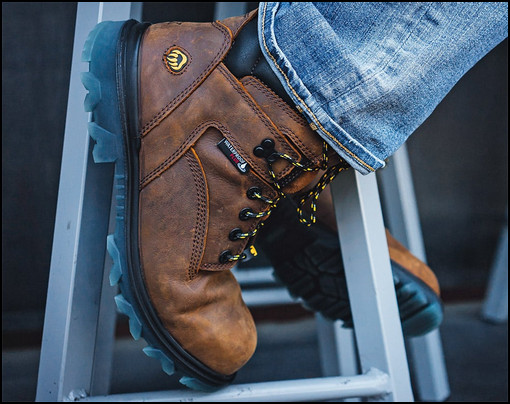
Wolverine boots have a padded collar on your ankles, and breathability is better than Timberland’s.
But the full-grain leather takes a bit of breaking in. Stiff at first, but once they mold to your feet, it’s a match made in heaven.
Let’s switch gears to the Timberland.
The PRO boots boast some proprietary tech that’s all about day-long comfort.
The Anti-Fatigue Technology is a game-changer, absorbing impact and injecting a dose of energy back into your feet.
The padded collar is a nice touch for ankle support, and the 24/7 Comfort System with suspension tech is the unsung hero of arch support.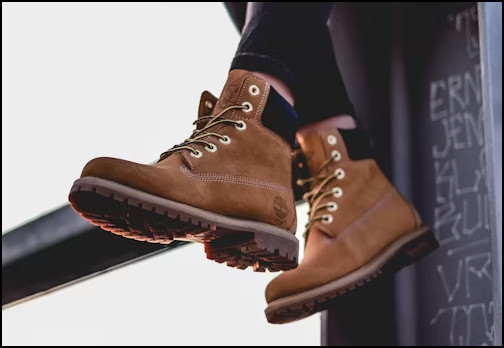
What I love about Timberland is their versatility.
These boots are designed for comfort in any setting, from city streets to mountain trails. They’ve got that all-day wear focus.
Ultimately, I’d happily go on an all-day walk in Timberlands for that anti-fatigue structure.
But I go with the Wolverine if it’s a rugged journey with many shocks and compression needs.
4. Fit & Cushioning
Both Timberland and Wolverine usually run true to size.
But Wolverine tends to be a tad narrower.
Now, if you’re like me and enjoy that snug feel, Wolverine’s got you covered.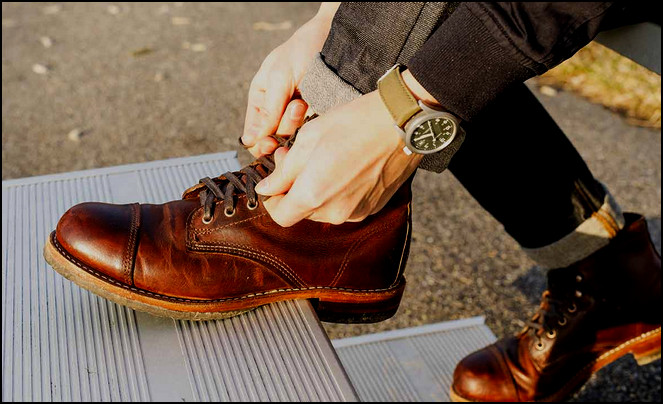
But if you prefer a bit more wiggle room, Timberland might be your go-to. Their boots often boast a wider toe box, giving your tootsies some breathing space.
Due to the spacious fit, you might think Timberlands run big. But in truth, they are regular size.
Both brands offer wide and narrow options.
In terms of cushioning, Wolverine uses Poron® XRD in some models. This material is an excellent shock absorber. It takes a beating and bounces back.
Trust me; it’s a game-changer for those long walks or tough terrains.
On the Timberland front, they’re rocking EVA foam for cushioning. It’s comfy, no doubt. But, over time, the cushy feeling starts to fade.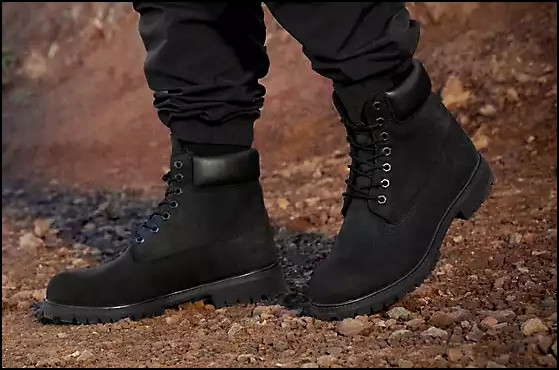
Overall, if you’re a hardcore hiker, you might lean towards Timberland for that responsive support. But if you’re all about everyday comfort, Wolverine’s plusher cushioning will be the perfect choice.
5. Safety Measures
Wolverine is all about covering your bases in the safety department.
The safety toe caps are like bodyguards for your toes. They shield against high compression and impact. Trust me; I’ve dropped my fair share of heavy tools, and those toe caps have saved me from a world of hurt.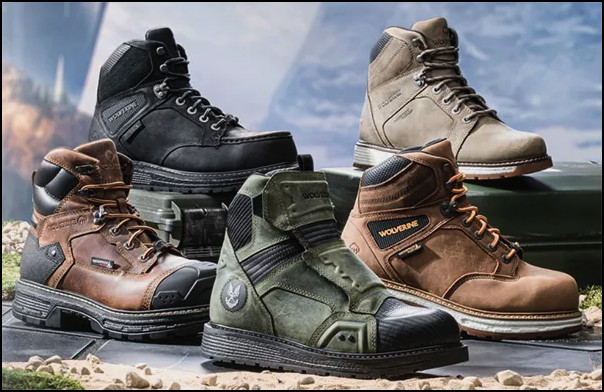
But it’s not just about toes with Wolverine; they’ve got your entire foot covered.
The waterproof uppers are a savior when trudging through mud or caught in a downpour. Also, the outsoles provide heat and chemical resistance for added safety.
Now, Timberland steps into the ring with some serious contenders.
The safety toe caps in Timberland PRO boots are like Fort Knox for your feet. Whether they’re made of metal or nonmetal materials, nothing can fall on your feet that hurts you.
Timberland goes the extra mile with metatarsal guards. Now, these aren’t just for show; they’re like body armor for the top of your feet. Crushing, compression, impacts – these guards can handle it all.
I’ve had a few close encounters with heavy machinery, but with these boots on, I barely felt anything.
And then there’s the puncture-resistant plates. It’s a shield for the sole of your foot. I’ve stepped on more nails and sharp objects than I’d like to admit, and those plates have saved me from some serious pain.
When it comes to electrical hazards, Timberland doesn’t mess around. Their boots are a fortress against shocks and static.
The static-dissipative protection is exceptional if you’re dealing with sensitive electronic equipment.
I’ve been in situations where one wrong move could fry a whole system. But my Timberland work boots keep me grounded and dissipate static electricity.
Overall, the Wolverine Floorhand Boot and Timberland PRO Pit Boss Steel Toe are the superheroes of the work boot world. Both bring the heat in toe protection against impact and compression threats. For me, they’re both winners in their own right.
6. Weight Specifics
Wolverine boots are designed with lightweight in mind. The lightweight features, like non-metallic shanks and a PU midsole, make a real difference.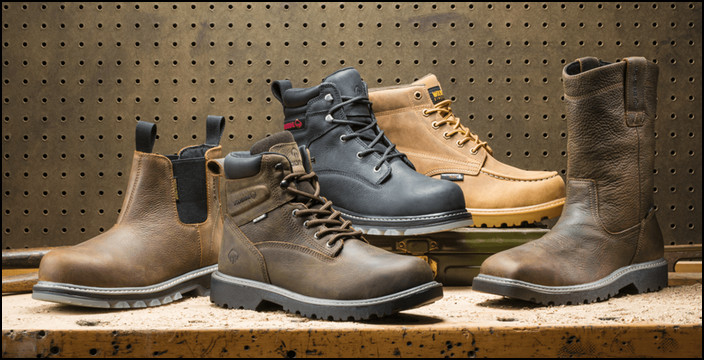
Now, let’s find out how much Timberland boots weigh.
These boots are generally on the heavier side.
The steel toes, puncture-resistant plates, and thick rubber outsoles for traction add some serious bulk. You’ll feel the weight after a while.
Specific models like Timberland PRO Pit Boss and Wolverine Floorhand boots are heavyweights in the boot game.
These work boots are hefty with their sturdy structure and steel toe caps. So they’re not exactly the most comfortable shoes for all-day wear.
But if I had to pick a winner based on weight alone, I’d have to go with Wolverine.
7. Design & Style
Both Wolverine and Timberland are boot veterans, each with a loyal following. However, the design details and overall vibes greatly influence personal preference.
Wolverine leans towards a rugged yet refined aesthetic.
Their classic silhouettes, like the 1000 Mile Boots, exude timeless charm, perfect for channeling your inner lumberjack style.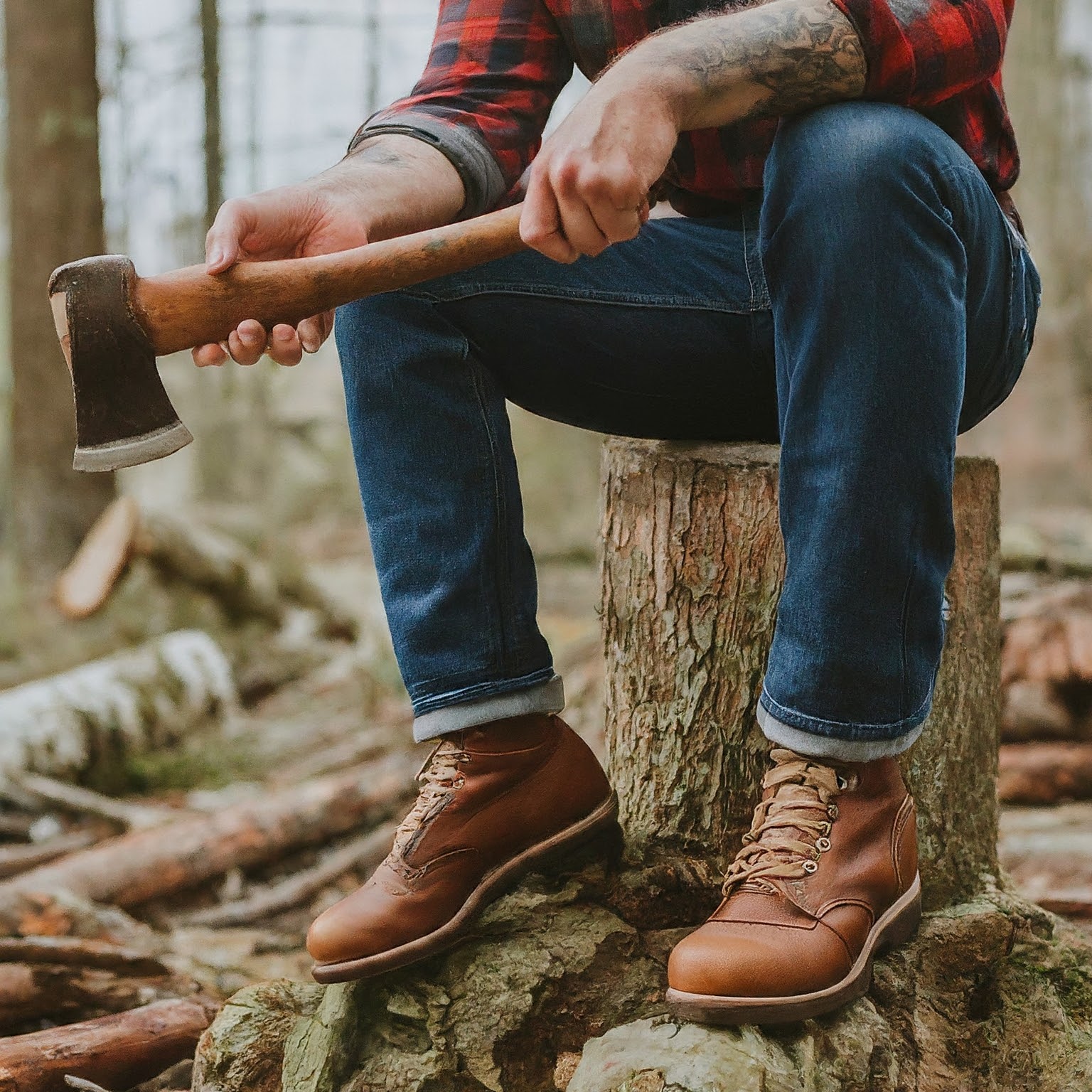
But don’t be fooled by the heritage vibes. They also offer modern interpretations like the Chelsea boot with sleek lines and premium leather.
Color palettes tend towards earthy tones like brown, tan, and black.
What truly sets Wolverine apart is their versatility.
I love how their boots seamlessly transition from workwear to weekend adventures.
Throw on a pair of the Wolverine Black Leather Chukkas with jeans and a flannel for a casual night out, or lace up the Journeyman boots for exploring the trails.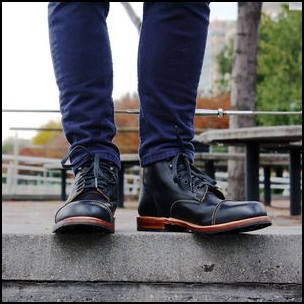
On the other hand, Timberland boasts a bold and instantly recognizable aesthetic.
The iconic yellow boot with its chunky silhouette is a cultural symbol, and it still holds a special place in my heart for its nostalgic charm.
But Timberland isn’t stuck in the past.
They offer modern takes on classics, like the Chelsea boot with updated materials and colors.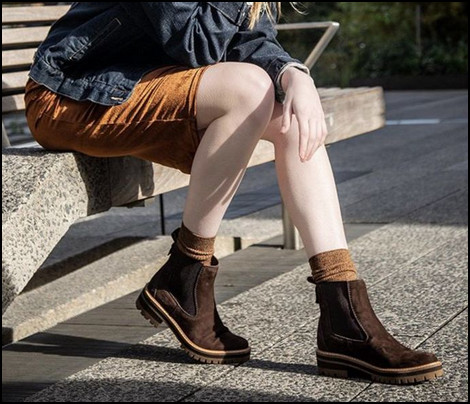
However, regarding color variety, Timberland leans more towards neutrals with pops of brighter accents. While this keeps things classic, I sometimes miss the earthier tones and bolder hues Wolverine offers.
Still, their boots are undeniably versatile.
Their chukkas and Chelsea boots are perfect for everyday wear, while their hiking boots are trusty companions for outdoor adventures.
Both Wolverine and Timberland offer high-quality, stylish boots with distinct personalities. It all boils down to your personal preference.
8. Price and Value for Money
When it comes to boots, both Wolverine and Timberland have built empires on rugged good looks and built-to-last quality. But for us, the price tag matters a lot.
Wolverine’s got a reputation for being a blue-collar hero, and their prices reflect that.
Work boots like the Floorhand Waterproof 6″ Work Boot, a legend for its durability and comfort, can be had for under $104.95. It’s a lot cheaper compared to some Timberland work boots that push the $155 mark.
Even their casual boots like the Emerson, with its sleek,chukka-style design, come in a budget-friendly $55-$120 range.
Sure, you might not get the same level of trendy bells and whistles as some Timberlands, but Wolverines are built to endure. Their no-nonsense construction and quality materials mean you’re getting a boot that’ll see you through thick and thin, all without breaking the bank.
Plus, Wolverine throws in regular sales and discounts, especially around holidays and during off-seasons.
So, if you’re looking for a reliable and affordable boot, Wolverine’s your go-to.
In contrast, Timberland leans more towards the fashion-forward side of things.
Their iconic yellow boots, while undeniably cool, can cost more than $200. Even their hiking boots, like the Chocorua, are pricier than Wolverine’s counterparts.
So, why are Timberlands so expensive?
These boots are crafted with quality in mind, but you’re paying a premium for the brand name and trendy designs.
However, Timberland isn’t all about expensive shoes.
They have budget-conscious options like the Radford boot, a stylish chukka that falls closer to the $100-$150 range.
And let’s not forget their frequent sales and clearance events, where you can snag Timberlands at a fraction of the original price.
Ultimately, the winner in this price battle depends on what you value most.
Wolverine’s your champion if you’re all about affordability and rugged reliability. But if you crave a touch of trendy style, Timberland might be your match.
Remember, both brands offer quality boots, so the true winner is the one that best fits your budget.
9. Support & Flexibility
When battling challenging terrain, both Wolverine and Timberland boots boast features that cushion your steps and stabilize your feet.
Shock Absorption
Wolverine’s EPX technology shines here. Their insoles absorb impact effectively, returning energy with each step to reduce fatigue.
Timberland counters with their Anti-Fatigue Technology. It uses geometric cones in the midsole to provide similar shock absorption and rebound.
Both contenders offer excellent protection against harsh terrains.
Foot Stability
Both brands prioritize stability. Wolverine’s insoles often come with arch support for comfort and control, while Timberland employs shank technology in their midsoles for added rigidity.
Consider Timberland’s Pro series with reinforced shanks if you demand maximum stability.
But for everyday wear, Wolverine’s balanced approach might be more comfortable.
Flexibility
Timberland often leans towards stiffer constructions for maximum durability, limiting flexibility.
Wolverine, however, offers more flexibility in their casual and hiking boots, thanks to lighter materials and construction methods.
If you prioritize agility and comfort over heavy-duty protection, Wolverine is the ideal choice.
Ultimately, the winner depends on your needs.
Wolverine’s EPX & DuraShocks is hard to beat for pure comfort and shock absorption.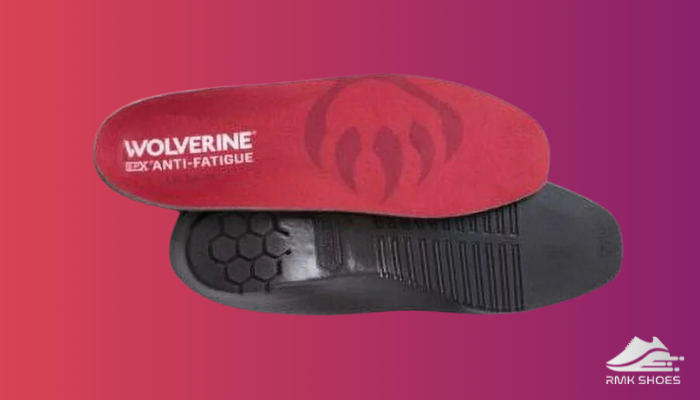
But if you crave stability and durability, Timberland’s Pro series takes the crown with its shank technology.
10. Specific Use Case
Two brands consistently rise to the top regarding rugged footwear: Wolverine and Timberland.
Wolverine shines in demanding environments, like construction sites & heavy duty.
Steel-toed models like the DuraShocks provide puncture protection, while features like Vibram® outsoles ensure exceptional grip on uneven terrain.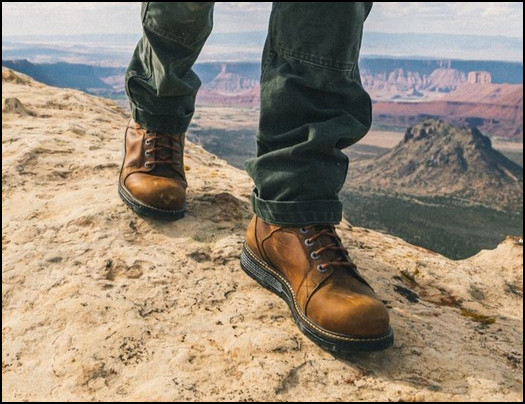
The Firewall series (Buccaneer Multishox Steel Toe Waterproof Wellington Boots) boasts waterproof construction and insulation for cold weather jobs to keep feet warm and dry.
Wolverine has your back on the trail for hiking & outdoor exploration.
Boots like the Hiking UltraSpring and Peak offer lightweight comfort and ankle support for long treks. Waterproof membranes and aggressive treads easily tackle mud, rain, and loose rocks.
Also, don’t underestimate Wolverine’s Casual style.
The 1000 Mile Boot collection blends heritage craftsmanship with modern design, perfect for dressing up or down. Choose the Addison for a classic Chelsea boot.
Now, let’s see what Timberland boots are good for.
While not as heavy-duty as Wolverine, Timberland offers solid options for lighter construction work.
The Workman Chukka features a non-metallic composite toe for protection without weight, while the PRO 222 boasts electrical hazard protection.
Additionally, Timberland excels in hiking and outdoor adventures.
The White Ledge series provides waterproof protection and supportive comfort for casual hikes and day trips. For more challenging terrain, opt for the Mt. Madison Mid with its sturdy ankle support and aggressive tread.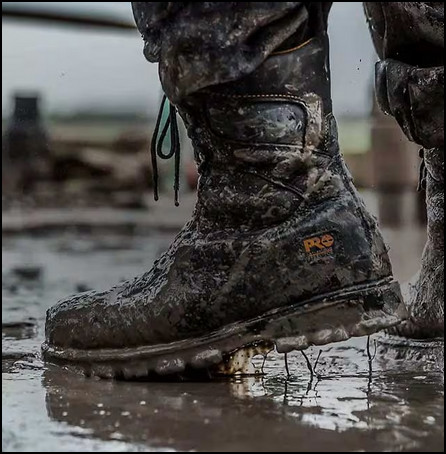
Timberland is synonymous with casual style.
The iconic Yellow Boot remains a timeless classic, but explore other options like the Earthkeepers® collection for eco-conscious designs.
Check out the City Rally™ Chelsea or the Radford Waterproof Chukka for trendy options.
Ultimately, the choice depends on your needs. Wolverine reigns supreme for heavy-duty work and serious hiking, while Timberland offers a wider range of casual and light-duty options.
Pros and Cons between Wolverine and Timberland Boots
By evaluating the merits and drawbacks of both brands, you can select the one that aligns with your style, performance objectives, and comfort requirements. It ensures that the shoes you choose perfectly meet your needs.
Let’s delve into the strengths and weaknesses of both Wolverine and Timberland.
Wolverine Boots
- »Rugged and durable for demanding work environments.
- »Premium materials like full-grain and Horween leather.
- »Goodyear welt construction for resoling.
- »Lightweight with non-metallic shanks and PU midsoles.
- »OrthoLite or double-density foam footbeds for comfort.
- »EPX technology for impact absorption and energy return.
- »Offers various widths, including narrow options.
- »Have a narrower fit.
- »Limited style variety, mainly utilitarian.
- »Limited presence in casual fashion.
Timberland Footwear
- »Global brand with iconic, durable boots.
- »Wide material range: full-grain leather, nubuck, synthetics.
- »Innovative waterproofing technologies.
- »Modern, versatile designs for work and casual wear.
- »Anti-Fatigue Technology and 24/7 Comfort System.
- »Varied styles appeal to a broad audience.
- »Generally true to size with wider toe boxes.
- »Generally heavier than Wolverine.
- »Higher price point.
- »Cushioning loses plushness over time.
Timberland Vs Wolverine Boots Review: Which One Should You Buy?
The battle between Timberland and Wolverine is a close one, with each brand boasting strengths catering to different needs.
Whether you prioritize rugged durability for the construction site, unmatched comfort for long treks, or stylish versatility for everyday wear, both brands offer compelling options.
Remember, the best boot ultimately depends on your unique requirements and preferences.
If durability and resilience are your top priorities, Wolverine shines. But if you want comfort and modern features, go with Timberland.
Consider the factors I’ve explored: durability, comfort, price, style, and use cases. Reflect on your budget, the environments you’ll encounter, and the level of comfort and performance you desire.
FAQs
Are Wolverines more comfortable than Timberlands?
Wolverine tends to have lighter, more flexible boots, which you may find more comfortable for long days on your feet. Meanwhile, Timberlands, especially work boots, often have stiffer soles for better traction and protection, making casual wear less comfortable.
Which boots last longer, Timberland or Wolverine?
Wolverine boots generally have a reputation for more extended durability, especially their work boots, known for thick, premium leather and reinforced construction. While still sturdy, Timberland boots may use thinner leathers in some models, impacting longevity.
Are Timberlands good for hiking?
Timberlands can be suitable for hiking. Even though their classic boots are more for fashion and not ideal for challenging trails, their newer hiking boots are designed for the outdoors, offering waterproofing, comfort, and good traction.
Is Wolverine Floorhand Boot better than Timberland PRO Pit Boss Steel Toe Work Boot?
Both Wolverine Floorhand and Timberland PRO Pit Boss are steel-toe work boots but excel in different areas. Floorhand shines in wet environments with its waterproof design, while Pit Boss prioritizes comfort and durability with shock absorption and electrical hazard protection. Choose Floorhand for keeping your feet dry or Pit Boss for long days on demanding jobs.
Where are Timberland and Wolverine boots made?
While both Timberland and Wolverine offer some USA-made boots, most are produced overseas. Timberland’s boots are crafted in numerous countries like China, Vietnam, and India, with only limited editions made in the USA. Wolverine, known for its 1000 Mile boot, manufactures in the USA alongside other locations across Asia and South America.
Are Timberland or Wolverine work boots good?
Both Timberland and Wolverine make quality work boots. Timberland PRO boots are typically more affordable, waterproof, and have good traction. They might be heavier and less flexible than Wolverine boots, known for comfort and flexibility.

